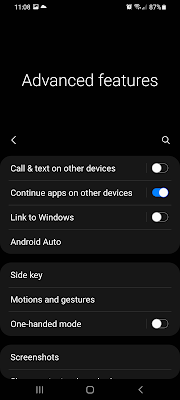In today's post, we will look at some of the major differences between the two most popular custom android skins - Xiaomi's MIUI 12.5 (Indian version) and Samsung's One UI 3.1
Both Xiaomi and Samsung offer smartphones with great specs and hardware at various prices, but both devices' software experience is totally different. Samsung's One UI and Xiaomi's MIUI both have custom Android skins, and both the software runs on the latest Android 11 version.
Also, read - MIUI 12.5 update tracker
Volume Panel
Samsung's OneUI and Xiaomi's MIUI both offer customization of almost everything in the UI, and after updating to the latest, both the OEM's have changed their Volume panel design.
Talking about Samsung, the new volume panel UI looks quite decent as it has a greyish color feel and has all the volume controls like System, Notifications, Ringtone, and media. It also has the live captions option, and settings option to limit the media volume.
In MIUI, the look and feel of the volume panel are quite different compared to the old, now it blurs the background and the color of the volume slider is grey instead of blue.
Notification Panel



In MIUI, the Notification panel has now some additional features like smart devices, it controls all the smart devices like LEDs, smart bulbs for dimming the brightness, also at the top now it shows the date and time instead of the control centre. also, we can change the smart home styles like Android R easter egg, WiZ, and more.



In Samsung, we also have a similar type of feature but for that, we have to install a supported app such as SmartThings or Google Home.
Another feature we have on the Notification panel is media where we can play media, control the Audio output, Music share to play the music on someone's Bluetooth speaker or headphones, smart View.
Gestures
Talking about the Gestures, both Xiaomi and Samsung supports the Full-Screen Gestures and works very well.
In MIUI, after updating it to MIUI 12.5, the Gestures and the animations are now so much smooth, everything is just working fine.
Swipe left or right across the Navigation pill to switch between apps is also smooth now.
Moving onto Samsung's Navigation bar we can change the Button order, and in Swipe Gestures, we have the option to Swipe from the button and swipe from sides and bottom.
Moreover, we can set the Gesture sensitivity from Lower to Higher.
Moving onto the special features, we have some of the special features present in both OneUI and MIUI.
In Samsung, we have Easy mode, Touch sensitivity to increase the screen's touch response for use with screen protectors.
To enhance the gameplay experience we have the Game launcher, side key button, Link to windows, and more.
In Xiaomi, we have VR settings, built-in App lock, Dual Apps, Quick ball, Enterprise mode.
Video toolbox to add special effects and features.
To improve the gaming experience we have a Game turbo, performance mode for gaming, and more.
LockScreen
Talking about the Lockscreen, In Samsung, if we tap on the clock widget it will open the default Widgets of Youtube, and clock but under settings we can change the weather, digital Wellbeing, show on Always on Display, etc.
In Xiaomi, this widget feature is missing but it has super Wallpapers and after the update, it has now smooth animations while unlocking the device.
Missing Feature



One Missing feature that Xiaomi can add to its UI is the Edge panel which is available on Samsung and it works very fine and is easy to use. In this feature, we can open any app, contact any person, Create or open any task, and a lot more panels to add. We can also change the position of the bar from left to right.
MIUI 12.5 or OneUI 3.1: Which is better
After updating it to their latest software's both Samsung's OneUI and Xiaomi's MIUI is enough capable to use as a daily driver because both have various customizations and features but in my opinion, I prefer the OneUI over MIUI as the ram management is amazing in OneUI as compared to MIUI, and it also offers Overall consistent and smooth experience.
After the MIUI12.5 update, the animations are much smoother, and the gestures are also a bit optimized and have no lags while using.


























Comments
Post a Comment